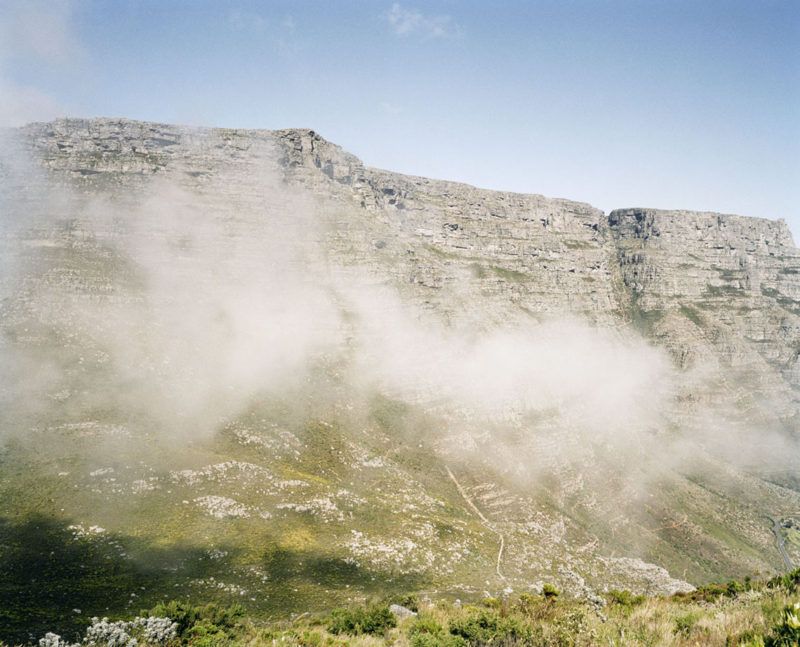“In 2008, while living and studying in Cape Town,” Olufemi Terry begins the text that is an integral part of How Does It Feel…, “I heard, over and over, two observations about the city: it was a place of singular beauty, perhaps even the world’s most captivating city. Visitor and local alike seemed incapable of seeing other landscapes than the physical one, and some claimed that the city’s insularity was a result of the mystical, domineering influence of Table Mountain. The second perception, loosely related to the first, was that Cape Town was not an African city or, at least, not a ‘real African city.'” Over the past few years, I’ve grappled with the idea of place and how photography can possibly treat it many times (see, for example, this article; also c.f. the Index). It would seem that the medium is perfect for a treatment of place: you point your camera at, well, some place, and you’re all set. But in reality, it’s very likely that someone will take offense, for whatever reason.
Terry’s words mirror this existential struggle at the core of photography (which, mind you, is not limited to place): “Visitor and local alike seemed incapable of seeing other landscapes than the physical one.” Photography, by construction, is incapable of seeing anything other than the physical landscape. If you want to address anything else – and let’s face it, place is almost always 99% about that “anything else” – you’re in trouble. But that problem is not insurmountable. All you’ll have to do is to stick your head out of the window, make your pictures while being open to what the world might have to offer, and then present the results not as the place, not as the picture of the place, but as a picture of it, your picture – a picture that inevitably will be flawed, but that, if you do it well, derives much of its power from its flaws.
To be human, after all, is to have flaws. To ask for more is to ask for the impossible.




How Does It Feel… combines Terry’s text with photographs my Marco Lachi, trying to get beneath the surface of Cape Town in two different ways. If photography deals with surfaces, then language does as well, but it does it from the other side. While essentially based on tacit agreements between those who use it, ultimately language, in particular writing, is the essential struggle to break out of a completely inner world in such a way that the words’ recipients (equally stuck in their inner worlds) get what you, the writer, mean.
Writers try to break out, photographers try to break in.
But one will never be like the other. The big mistake many photographers make when trying to incorporate writing (or when working with a writer) is to pretend that it’s all just the same thing in slightly different form (“photographs are like poems”), or to expect that the role of writing is to fill the holes. How Does It Feel… neatly avoids these misconceptions, these problems. It is what a collaboration between a photographer and a writer should be: a collaboration between two creative people whose media cannot be equal, on equal terms.

We get to see photographs made in Cape Town, photographs a great many of which work with withholding information (as if to drive the point home: these are photographs of this place, and they can’t do what you want them to do), and the text does the same thing, telling us about fragments that allude to something bigger. And what fragments they are! Consider this one: “For a makwerekwere, a foreign black, Cape Town offers no natural constituency. I, on entering a restaurant, became invisible unless in the company of a white person. If, however, my companion happened to be white and female, I became not only visible, but a spectacle. The worst thus, of all worlds: utter oblivion or the stares of voyeurs.”
And, again, isn’t that what photographs so often deal with?
